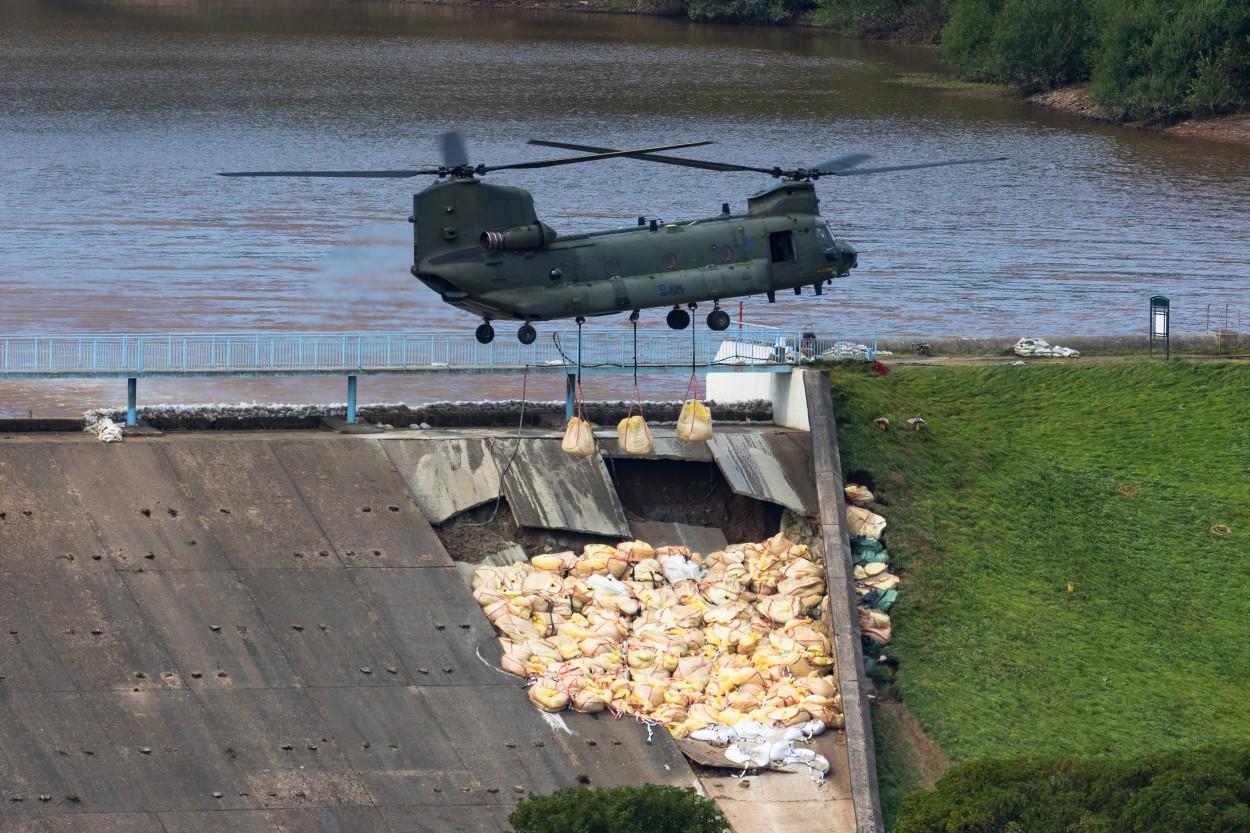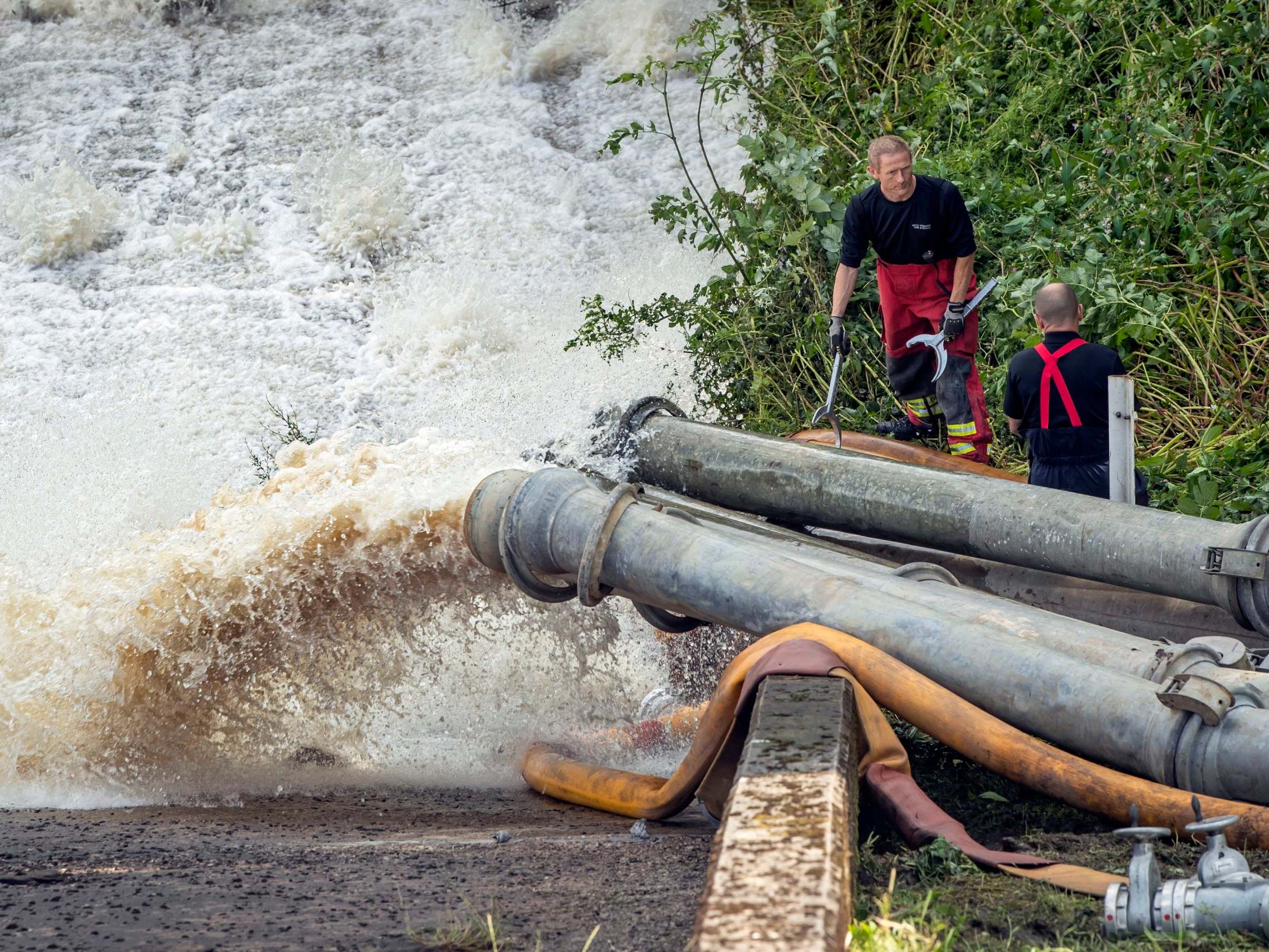‘A thousand body bags were on standby’: a year on, new details emerge of desperate race to avert Whaley Bridge dam catastrophe
Derbyshire town faced being wiped off map if reservoir walls had collapsed
Your support helps us to tell the story
From reproductive rights to climate change to Big Tech, The Independent is on the ground when the story is developing. Whether it's investigating the financials of Elon Musk's pro-Trump PAC or producing our latest documentary, 'The A Word', which shines a light on the American women fighting for reproductive rights, we know how important it is to parse out the facts from the messaging.
At such a critical moment in US history, we need reporters on the ground. Your donation allows us to keep sending journalists to speak to both sides of the story.
The Independent is trusted by Americans across the entire political spectrum. And unlike many other quality news outlets, we choose not to lock Americans out of our reporting and analysis with paywalls. We believe quality journalism should be available to everyone, paid for by those who can afford it.
Your support makes all the difference.When a Derbyshire dam threatened to catastrophically collapse one year ago today, it was footage of a Chinook helicopter dropping sandbags that seemed to capture both the scale of the potential disaster and the sheer scope of the operation to avert it.
Had the crumbling wall at Toddbrook Reservoir failed, some 280 million gallons of water would have engulfed Whaley Bridge, the town of 6,000 people below.
So bad would the destruction have been, 1,500 evacuated residents were warned they would not have homes to go back to. A thousand body bags, The Independent now understands, were transported into the area.
Yet, if that Chinook became synonymous with the dam’s skin-of-the-teeth saviour, it was, it now seems, the death-defying actions of a single police officer which may have prevented the structure’s total collapse at the moment of maximum risk.
Today, on the anniversary of the near-disaster, The Independent can reveal the work of PC Geoff Marshall has since been credited by engineers with almost certainly saving the town below.
With fire crews frantically trying to pump water from the facility, the 55-year-old specialist officer risked life and limb to locate himself on that crumbling spillway wall. There, he laid 400 sandbags – each one passed to him by colleagues from the bridge above – in a desperate, last-resort bid to shore up the disintegrating structure.
Astonishingly, he continued his crucial work even when whirlpools started forming in the water lapping at his feet – a sign he had been told meant total collapse may be mere moments away.
“The engineers have since said that single act of laying those sandbags probably saved the reservoir from collapse because that extra lip meant the water couldn’t then overflow to where all the damage had already taken place,” says Rachel Swann, deputy chief constable with Derbyshire Police, today. “And that engineer said he felt that made a massive difference … it was an extreme act of bravery.”
So hopeless did the situation look at one point, indeed, that there was a suggestion PC Marshall and those colleagues above him on the bridge should pull back to safety – and instead prepare for a rescue and body retrieving operation in the valley below.
“We were asked to get off [the wall and bridge] because it was too dangerous but it needed doing,” he says today. “That was the decision on the ground. We needed to keep trying because if we didn’t…”
He trails off.

The drama started that morning when the Derbyshire town’s priest, Father Jamie MacLeod raised the alarm after noticing that, following a night of heavy rain, water from the reservoir was seeping through parts of the vast 180-year-old concrete wall.
As engineers arrived on scene – one of them, David Brown, by a blue lights police escort – the peril of the situation became clear: without immediate intervention, schools, businesses and homes below would be engulfed by a wall of water several storeys high.
Such was the volume of what would cascade down that Whaley Bridge alone was not in danger. The towns of Furness Vale and New Mills – the latter some three miles away – would also have suffered severe flooding.
If it happened without an evacuation, deaths would not be counted in the dozens, police and fire crews were told at the scene. They would be counted in the hundreds. In one of the grimmest moments of the whole episode, 1,000 body bags arrived at Whaley Hall, the religious retreat where Father MacLeod is based above the reservoir.
“They were on standby here,” he says today. “It is traumatising to see that. I still think about it now.”
For Rachel Swann, it was a situation unlike any she had ever faced in her 26 years in the police.
As she was briefed about what was happening some 35 miles away at the force’s HQ in Ripley, her immediate priority became evacuation.
“The scale of responsibility was not lost on us,” she says. “I’ve done a lot of command down the years, and that just kicked in. My main thought was, ‘Okay, I need to get this, this and this in place’, and that’s what we did.”
Officers were dispatched to tell people they had 15 minutes to get any essentials and leave. So concerned were police that the instruction came with a clause: if residents heard three large blasts of a horn before they had got out of the danger area, they should drop everything and run for higher ground.
“People were brilliant, and so supportive of us,” says Swann. “Most picked up their stuff and left and then [when they were safe] turned around and said, ‘Right, what can we do to help?’”

Many ended up, that evening, in an emergency support centre at Chapel High School in the neighbouring village of Chapel-en-le-Frith. The atmosphere there was rueful but resilient.
“I had about enough time to get my false teeth and toothbrush, and that was it,” one chap, Peter Willis, told The Independent. “But what can you do? If there’s a risk to life, better they get us out than to do nothing and hope the wall holds.”
A rumour went round – more or less correct as it turned out – that if the weather didn’t hold, the dam might not either. At about 8pm – the same time PC Geoff Marshall was dropping sandbags on that spillway wall – the Heavens opened.
“Until I hear there are fish swimming through my house,” Mr Willis, a retired publican, said, “I’m working on the assumption that this is all a precaution.”
As he and others watched the TV and the clouds outside, fire crews, police officers, mountain rescue volunteers and engineers with the Canal and River Trust – which own the reservoir – fought to ensure they had homes to go to.
In the rain and the fast-growing dark, it was desperate stuff.
“It was failing and the engineer told us – he left us in no doubt – if we didn’t manage to reduce the water the chance of complete failure was more likely than not,” says Gavin Tomlinson, chief fire officer with Derbyshire Fire and Rescue Service. “It was above 50 per cent. We were looking at a catastrophe. I’ve never been through anything like that before and I suspect I won’t ever again.”
Some 23 high volume pumps were brought in from across the country – from Devon, the West Midlands and South Wales – to suck water away. A 24th was sent over from the Netherlands, although it was not needed in the end. An entire 50-metre road was constructed to allow the vast machinery better access to the facility. Even footbridges were built to give crews a way of getting over the six miles of heavy-duty piping that snaked from the water.
Away from the reservoir itself, meanwhile, crews were stationed at two other locations. Their instructions were to wait. If the dam did go, they would be the teams sent in to the raging water to rescue anyone still down in the valley.
“We hoped they would not be needed,” says Tomlinson. “But you have to have those contingencies in place.”
In the end, of course, they remained on standby only.
The new sandbag walls and the huge pumping effort managed to hold ensure the dam stayed standing.

When the RAF Chinook arrived the next day to drop thousands of tonnes of aggregate to further secure the structure, the danger, while certainly not over, was beginning to recede.
With water levels dropping, divers and boat crews were sent in to clear debris and weeds from clogging up pipes in case of another deluge that never came. Dozens of residents started turning up at the top end of the reservoir to cook food on gas stoves for shattered crews.
By Saturday morning, those evacuated were being told that, while they may not get home for another few days, barring something extraordinary, they would have homes to go to.
Within a few more days, the fire service had pumped 270 million gallons of water away from the site. In the end, they left the reservoir just 10 per cent full – enough for the fish. Once that was done, temporary repairs started to secure the site – something only finally finished just last month. A full £10m restoration project will now begin next Spring and is expected to run until 2023. The facility will remain more or less dry until that point.
“When I think about it now,” says Tomlinson, “it’s just pride at what we achieved. Everyone came together to achieve a single objective ... It was text book, really.”
So happy is he with how the whole operation ran, future fire crews could, he says, use it for training purposes as an illustration of exemplary practice.
The question of why the dam started to collapse, meanwhile, was finally answered in March.
A report by Professor David Balmforth put the failure down to a combination of poor design and, crucially, a lack of maintenance. An engineer had inspected the facility and warned the Canal and River Trust there were safety issues which needed putting right as a matter of priority, it found. Those issues had not yet been addressed when the near-disaster struck.
The trust has since said it is “acting on all the lessons learnt”.
“We and many reservoir owners have learned valuable lessons from the incident,” Daniel Greenhalgh, the Canal and River Trust’s North West regional director, said in a statement.
Yet while those lessons are being studied and repairs are taking place, there was at least one happy coda to the whole episode.
The constant newsfeed from the Derbyshire town that week highlighted to the rest of the world what residents had known for years: what a beautiful place Whaley Bridge is.
By the end of August, it was enjoying a mini tourist boom on the back of its brush with existential calamity. The Chernobyl effect, one councillor, Martin Thomas, called it.
By the end of the year, meanwhile, house prices in had gone up by between five and 10 per cent. There was, it seems, a clamour of people wanting to live beneath the now famous dam.

Join our commenting forum
Join thought-provoking conversations, follow other Independent readers and see their replies
Comments